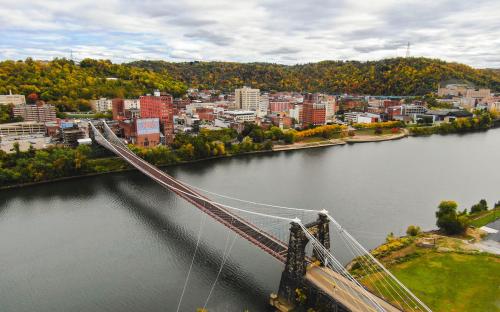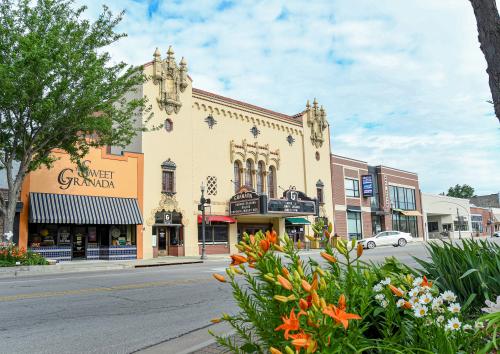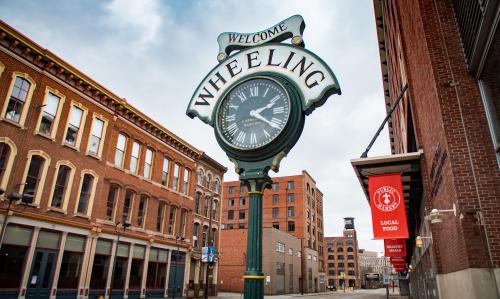In the weeks since Joe Biden was declared the winner of the 2020 presidential election, a familiar story of American politics has had plenty of time to fester: The narrative of “two Americas,” politically and economically divided into “thriving” urban places that went for Biden and “hurting” rural places that went for Donald Trump, destined by geography to a bleak future of polarization and discontent.
This narrative presents two societies so fundamentally opposed they barely belong to the same world, framing urban America as diverse, educated, and economically productive and rural America as white, dependent on dying industries, and characterized by stagnation, decline, and despair. While this framing stems from real economic-political trends (including analysis from our colleagues showing that Biden-voting counties comprise 70% of the nation’s GDP), pundits, journalists, and policymakers have extrapolated these trends to fuel a urban-versus-rural narrative that is not only inaccurate, but harmful to our nation’s collective political and economic future.
As we demonstrate here and expand upon in a new research series, dividing our nation into such a binary has immediate, lived consequences for people living in all corners of America. The binary-based narrative is not only inaccurate, but has potential to inflict real harm in four distinct ways. First, it prioritizes the political concerns of an imagined, white rural monolith and erases the needs of rural people of color during a pandemic which is disproportionately devastating rural Black, Latino or Hispanic, and Native American communities. Second, it furthers misconceptions about rural economies which devalue the role of rural places in American (and urban) prosperity. Third, it propagates a myth of place-based poverty that erases people living in a range of high-poverty geographies, justifying oversimplified antipoverty policies. And finally, the binary-based narrative obscures effective policy and practice solutions for rural economic development that embrace the interdependence of rural and urban economic futures.
Rural America is not all white, and spreading this falsity caters to white supremacy
As our colleague Andre M. Perry recently wrote, prioritizing calls to “heal” the rural-urban divide conceals the real divide of American racism, acts as if there are no working-class Black and brown people living in small towns, and furthers “the unstated assumption that the country can’t heal if white Americans aren’t accommodated first.” As Perry and others have pointed out since the 2016 election, conflating “rural” with “white” propagates an incomplete story of rural America that centers white political anxieties. This incomplete story furthers myths about race and poverty in America that cater to white supremacy, and the longer it remains dominant, the more severe consequences it engenders for people across America.
On a political level, attributing the close election to an urban-rural divide obfuscates actual voting patterns. Situating Trump’s base in rural areas conceals the fact that a majority of white Americans voted for Donald Trump regardless of geography or income, and functionally obscures the political power of rural voters of color who helped carry the election for Biden.
At the human level, the portrayal of rural America as a white monolith erases the 21% of rural residents who are people of color, and who are critical to the economic future of rural and small towns and to the health of the nation overall. This comes at a time of unprecedented crisis in which Black, Latino or Hispanic, and Native American rural communities are disproportionately devastated by the COVID-19 pandemic and require coordinated fiscal relief to survive. As we demonstrate throughout our research, if the nation wants to focus on the plight of rural America, it should strive to advance health, opportunity, and equity for communities that COVID-19’s rural surge has impacted—not cater to the resentment of an imagined white rural monolith.
Rural places are essential—but undervalued—in the American economy
Rural communities are integral for American prosperity, yet they are consistently undervalued in the dominant rhetoric.
When measured by GDP, urban areas appear to be the engines of the American economy largely because the finance and knowledge economies have coalesced there, along with the bulk of the U.S. population. But these trends do not mean rural areas are irrelevant to the health of our economy or society, and there is growing global awareness that there are more ways of measuring economic value besides the GDP. Rural areas provide valuable ecosystem services to our nation and the world, such as food production, carbon sequestration, and stewardship of biodiversity and habitat resources. And, as our Brookings colleagues and the Center for American Progress point out, rural areas power, feed, and enlist to protect America, while providing natural resources, industrial innovation, and the workforce that the nation as a whole relies upon.
If COVID-19’s massive disruptions have taught us anything, it is that there is real security in having fresh food, production capacity for personal protective equipment, and outdoor space within our borders. Both our policies and our rhetoric can do a better job of properly valuing these rural assets.
The Democratic Party can do a better job of valuing rural places too. In past elections, rural places with recreation-, amenity-, and service-based economies were more likely to be Democratic-leaning pockets in otherwise red states. This held true in the 2020 election, as tourist-dependent rural economies in places like Colorado went for Biden—providing further indication there is no one “rural America” to blame for Trump’s enduring popularity.
Persistent poverty isn’t just a ‘rural’ problem
The narrative of the rural-urban divide propagates misconceptions about the nature of persistent poverty in America, with nefarious effects. Despite the attention paid to the economic anxieties of rural America, persistent poverty is not a rural phenomenon—and measuring it at this binary level won’t yield solutions that work for urban neighborhoods with similar statistics.
Persistent poverty is pervasive. According to the Department of Agriculture’s definition, rural counties account for 84% of places struggling with persistent poverty. However, if we classify places with persistent poverty using census tract data, most of them are in metro areas (Figure 1). How we measure persistent poverty matters for how we understand whose problem this is. At the county level, 30 states have at least one place facing persistent poverty. But at the census tract level, persistent poverty touches every state and Washington, D.C.
This isn’t just a methodological discussion—it’s political. We need to understand where persistent poverty is located in order to create political accountability and customize solutions for alleviating it. The “two Americas” are not urban and rural—they are neighborhoods and communities in every region that are separated by a host of other place-level challenges that shape opportunity.

What urban and rural America can learn from each other
The urban-rural divide overlooks common ground between the two and paints a picture of rural places that require “fixing” from urban America—or that should be abandoned altogether.
In reality, the rural economy is structured much like the urban economy, with the service sector comprising the largest share of employment in metro and non-metro areas alike (Figure 2). Moreover, effective strategies for rural economic and community development exist, and for decades, rural leaders have been implementing them and garnering real successes in fostering recreation, amenity-based, and service economies that support rural places of opportunity.

Our colleagues have demonstrated the federal government’s role in supporting thriving rural places. Our research dives into the hyperlocal role, focusing on the actions local leaders are taking to build rural resilience—including supporting clusters of locally owned small businesses that build community wealth, implementing built environment and quality-of-life improvements for vulnerable residents, strengthening social cohesion between neighbors, and nurturing new community-led structures to build capacity and advance community priorities. Embedded within our research are strategies both rural and urban leaders can learn from—lessons that reflect the shared realities of rural and urban places and the importance of locally tailored efforts to value and build upon place-based assets.
Far from dismal portrayals of rural places of despair, local leaders are innovating to foster inclusive, vibrant, and connected rural places in the long term. These places are a vital part of the nation’s shared future, and we must value, engage with, and invest in them.
Investing in local strategies for rural resilience
As the COVID-19 pandemic tests the resilience of rural economies in real time, the stakes for acting upon these insights are high. Rather than focus on binary divides between a misleading rural monolith and a “thriving” urban America, we need to take seriously the value, nuance, and diversity of rural people and places. This requires investing in solutions that uplift rural communities as a matter of equity and resilience, not as a response to a media-produced narrative that centers white resentment at the expense of an increasingly diverse and dynamic rural America.
-
Acknowledgements and disclosures
The authors thank Joanne Kim and DW Rowlands for their assistance collecting data for this piece.
The Brookings Institution is committed to quality, independence, and impact.
We are supported by a diverse array of funders. In line with our values and policies, each Brookings publication represents the sole views of its author(s).








Commentary
The ‘rural-urban divide’ furthers myths about race and poverty—concealing effective policy solutions
December 8, 2020